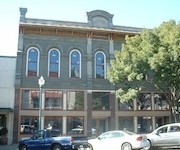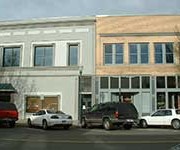History of 123 Eagan Street, Walla Walla, WA
Property Description:
Beginning at a point in the Southerly line of Eagan Avenue in the City of Walla Walla, Washington, which point is 82.5 feet Easterly, measured along said Southerly line of Eagan Avenue, from the point of its intersection with the East line of Fourth Avenue South (formerly Fourth Street), as said East line of Fourth Street was originally established prior to the vacation of the East 20 feet thereof; thence North 62º 40’ East along said Southerly line of Eagan Avenue, a distance of 92.5 feet, more or less, to a point therein which is 75 feet Westerly from the Northeasterly corner of Lot 17 of M. F. Jones’ Addition to the City of Walla Walla, Washington, according to the Official Plat thereof of record in the Office of the Auditor of said County of Walla Walla in Book “B” of Plats at Page 44; thence South 27º 30’ East 120 feet; thence South 62º 40’ West 116.7 feet, more or less, to a point in the Easterly line of the tract owned by Oliver Smith and Anna R. Smith, his wife; thence North 16º 06’ West, along the Easterly line of said Smith tract, a distance of 122.3 feet, more or less to THE POINT OF BEGINNING.
Situated in the City and County of Walla Walla, State of Washington in the Northeast quarter of the Northwest quarter of Section 29, Township 7N, Range 36W.
Title History:
Washington Territory was created in 1853. The new legislature created Walla Walla County in 1854 which stretched from the crest of the Cascade Mountains to the crest of the Rocky Mountains in the present states of Washington, Idaho and Montana. In 1855 an Indian council was held on the banks of Mill Creek at the present site of Walla Walla to purchase land from the Indians. The Yakimas, Cayuses and Walla Wallas were dissatisfied with the treaties and war followed. Missionaries, former French-Canadian employees of the Hudson Bay Company trading post at Wallula, and soldiers at the military Fort Walla Walla were the primary European occupants of the area prior to 1859 when it was opened for settlement. All of the land in this area was acquired from the Cayuse and Walla Walla Indian tribes by the U.S. Government in a treaty signed on June 9, 1855 in Walla Walla, and ratified on March 8, 1859 by President James Buchanan.
The town of Walla Walla was originally platted by County Surveyor H. H. Case in 1859, prior to its formal incorporation as a city in 1862, as a one-quarter mile square with its eastern side centered on the point where Main Street crossed Mill Creek (at roughly the point where it does now). The City of Walla Walla received a Trustee Townsite from the U. S. government which consisted of 80 acres issued on July 20, 1869 by the Vancouver, W.T. District Land Office.
The research on this property was complicated by four separate files including several adjacent properties, changing boundaries with complex legal descriptions, and numerous easements. This report will try to focus on the primary portion of what was once a 120 acre parcel and now is a 92.5 foot by 120 foot by 116.7 foot by 122.3 foot lot.
Frederick Saddler and John G. Sparks obtained a 120 acre patent from the U. S. government, finally issued on September 6, 1872, which included this property. The first property transaction on this property to be recorded in Walla Walla was on August 30, 1865 when John G. and Margaret Sparks sold 65.68 acres in the east half of the northwest quarter of section 29 to Henrietta E. Hunter for $1500. On May 3, 1870 Henrietta E. and J. W. Hunter sold undesignated parcels including a water right to B. L. Sharpstein for $160. On June 14, 1870 H. A. and Ellen Babcock sold B. L. Sharpstein an additional 8 parcels for $140. On February 15, 1876 B. L. and Sarah Sharpstein sold 4 parcels (“east side of Chase Street north ten rods, east 12 chains to center of small creek and up the creek to James Kennedy’s property.”) to Thomas G. Bean. On October 7, 1876 Thomas G. and Sarah Bean sold these 4 parcels to Reuben Kinney. These sales were never completed. On October 14, 1876, Sharpstein resold these same parcels and the right to use water to Frank W. Paine for $4000. On March 17, 1879 Sharpstein sold the water right of James Kennedy to Paine for $50. Babcock’s Addition to the City of Walla Walla was platted on May 26, 1880 to include an area from Second Street west on Stahl Avenue, south on an alley and east on Eagan Street including Lots 1-12 on the south side of Eagan Street. On May 3, 1880, Alfred and Ellen Babcock sold Lots 10, 11, 12 in Block 2 of Babcock’s Addition to M. F. Jones with a water right “to a spring on Second Street down Eagan Avenue” for $300. M. F. Jones paid $523.10 in back taxes on some of this property and received a Certificate of Sale on July 12, 1889 from the Walla Walla County Sheriff and Tax Collector. On November 7, 1889 Frank W. and Ida B. Paine sold a “parcel 57.4 feet south and 749 feet east of stone monument at the Northwest corner of the Southeast quarter of the Northwest quarter of Section 29, Township 7N, Range 36W” to M. F. Jones for $141. On March 8, 1891 this area was then platted again by M. F. Jones as the Jones’ Addition to the City of Walla Walla. On May 1, 1893 Sophina A. Jones sold Lots 1-12 on Jones Street between Chase and Fourth and Lots 13-19 east of Fourth on Eagan to her husband, M. F. Jones for $1000. On October 21, 1893 F. W. and Ida Paine signed a Quit Claim Deed for $1 with all water rights and title included in the platt of M. F. Jones.
On August 18, 1897 M. F. and Isabella Jones sold lots 13-19 of Jones Addition (with some exceptions) to Charles Cooper for $1050. In 1905 Charles Cooper’s wife had died and he sold this property to Archie Dunnigan for a stated amount of $10. Archie Dunnigan died on March 11, 1909. Following his death, his widow, Bridget M. Dunnigan lived here with various family members until 1935. On October 23, 1937 Bridget M. Dunnigan, a widow, and Rose Dunnigan, her unmarried daughter, gave a warranty deed to Mary J. Thomas, a single woman. Mary Thomas died on April 23, 1946 and her estate was handled by the Baker Boyer Bank Trust Department. On April 18, 1952 Baker Boyer Trust acting on behalf of the Last Will and Testament of Mary J. Thomas sold this property to Albert O. Bayer, and his wife Ailsie for $7000. Albert died on November 28, 1995 but Ailsie continued to live here for a total of 55 years until she sold this grand old home to Jeffery L. and Laurie D. Harrison and Terrence E. and Debbie J. Keller on August 15, 2007 for $239,900. After restoration of this classic Victorian house Harrison and Keller sold it to Craig H. and Kristine J. Davis on June 9, 2009 for $383,000.
Occupant History:
Early owners of this property, Babcock, Sharpstein, Paine and Hunter, were pillars of the community. None of them lived at this location. In 1894 Mrs. Sophie A. Jones lived on the southeast corner of Fourth and Jones (now called Eagan) Streets. This might have been the current house on another property that faces Fourth Street at its intersection with Eagan. The 1894 Sanborn Fire Map shows no buildings in the middle of this block where the house on this property now stands.
In the 1898 city directory Charles Cooper’s residence was described as ”on ss (south side) of Eagan btw. Third and Fourth” which is the location of 123 Eagan Street. Mr. Cooper had formed the Enterprise Planing Mill and Furniture Company in Walla Walla in 1880 with his partner Mr. Smuck. He married in 1890. However, he and his wife Lucy apparently lived in Portland in 1894. He built this beautiful home in Walla Walla for his wife and their children Alice and Charles. It was a show piece for building materials sold by his company. According to the Walla Walla city directory in 1880 Cooper and Smuck were proprietors of a chop mill on the south side of main street between Fourth and Fifth Streets, where Cooper also resided. In 1883 Cooper and Smuck were “manufacturers of furniture and proprietors of a chop mill” on North Third between Sumach and Cherry Streets. A carpenter named George Whitehouse lived and worked at the mill in 1880. In 1888 George W. Whitehouse and D. J. Crimmins became chief owners of the company, though Mr. Cooper retained his connection with the business. The company’s mill was destroyed by fire in 1903 and rebuilt of brick in 1904 at which time Mr. John M. Crawford of Fairmont, Nebraska became the principal partner in the business, which later became known as Whitehouse-Crawford Lumber Company at the same location. Lucy Cooper died on June 26, 1905 and Charles sold this house to Archibald Dunnigan on November 22, 1905 for “$10.”
Mr. Dunnigan was a farmer who owned considerable acreage four miles south of Prescott, WA. At the time he bought this house he lived nearby at 232 McAuliff Street. After he died in 1909 his widow Bridget M. Dunnigan lived here with various members of her family (P. Joseph, Margaret, Mary, Rose and Michael J.) for a total of 32 years, until 1937. From 1937 to 1950 Albert Niebergall, Jr. lived in this house but it was owned by Mary J. Thomas. Miss Thomas boarded at several locations, including in Maud Foster’s elegant home at Catherine and Thorne Streets. In 1951-1952 Charles E. and Delsie Henderson lived in this house on a month-to-month contract. Baker Boyer Bank Trust Department managed the house for Miss Thomas’ estate after her death in 1946 until 1952 when they sold the house to Albert O. and Ailsie M. Bayer. Mr. Bayer was a gunsmith who owned Bayers Gun Shop at 213 Second Avenue. They lived in this house from 1952 until his death in 1995 and his widow, Ailsie, continued to live here until 2007 for a total of 55 years. This remarkably restored 111 year old Victorian style home was occupied by two families for 87 of those years.
Construction of the Building:
The Walla Walla County Assessor’s Office lists this house has having been built in 1901. This research shows that date to be inaccurate. The 1894 fire map shows this land vacant. There are no city directories for 1895-1897. Charles and Lucy Cooper purchased this land in August, 1897. The 1898 city directory lists this house as being occupied by Charles Cooper. Therefore the evidence suggests that the construction of this house was started in 1897 and completed by or before 1898. There are no building permit records prior to 1907.
References:
BLM Land Patent Records
Bennett, Robert A., Walla Walla Portrait of a Western Town 1804-1899, Pioneer Press, Walla Walla, 1980.
Bennett, Robert A., Walla Walla A Town Built to be a City 1900-1919, Pioneer Press, Walla Walla, 1982.
Gilbert, Frank T.; Historic Sketches of Walla Walla, Whitman and Garfield Counties, Washington Territory, and Umatilla County, Oregon, 1882.
Lyman, Professor W.D., An Illustrated History of Walla Walla County 1901.
Lyman, Professor W.D., Lyman’s History of Old Walla Walla County, Vol. 1-2, 1918.
Ogle’s Standard Atlas of Walla Walla County, 1909
Sanborn Fire Maps: 1884-1905 (with updates until 1950).
Walla Walla City Directories: 1880-present (various publishers–not all years).
Walla Walla County Assessor’s Office: files + online
Walla Walla County Auditor’s Office: Grantor-Grantee Indices & Plat Maps
Whitehouse-Crawford Restaurant history <www.whitehousecrawford.com/dining-room/history.php>
Whitman College Archives.
U. S. Census records
Mary E. Meeker ; Walla Walla 2020 Research Service PO Box 1222, Walla Walla WA 99362 July, 2009
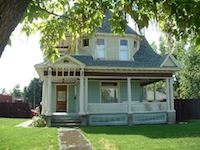

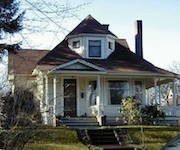
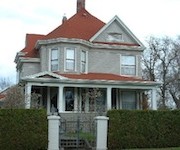
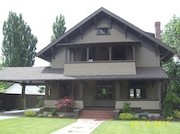
![77-Wainwright[1]](https://ww2020.net/wp-content/uploads/77_Wainwright1-180x115.jpg)
